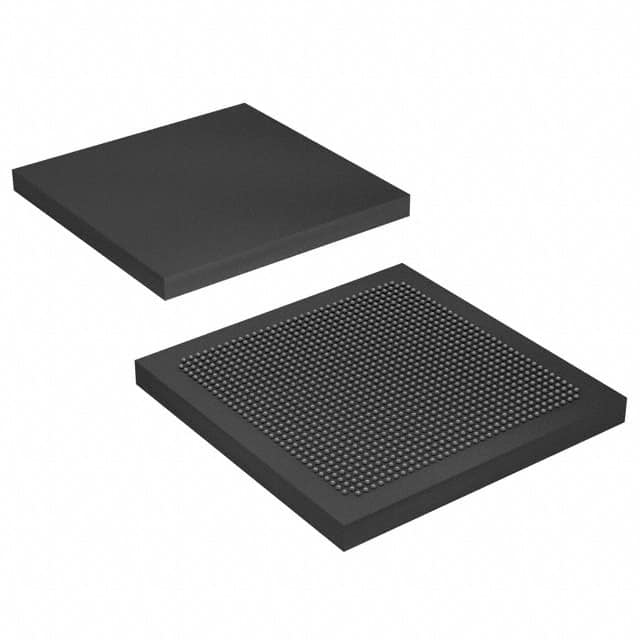Merrillchip New & Original own stock Electronic components integrated circuit IC XC7A25T-2CSG325C
Product Attributes
| TYPE | DESCRIPTION |
| Category | Integrated Circuits (ICs)EmbeddedFPGAs (Field Programmable Gate Array) |
| Mfr | AMD Xilinx |
| Series | Artix-7 |
| Package | Tray |
| Standard Package | 1 |
| Product Status | Active |
| Number of LABs/CLBs | 1825 |
| Number of Logic Elements/Cells | 23360 |
| Total RAM Bits | 1658880 |
| Number of I/O | 150 |
| Voltage – Supply | 0.95V ~ 1.05V |
| Mounting Type | Surface Mount |
| Operating Temperature | 0°C ~ 85°C (TJ) |
| Package / Case | 324-LFBGA, CSPBGA |
| Supplier Device Package | 324-CSPBGA (15×15) |
| Base Product Number | XC7A25 |
Demand for FPGAs driven by AI accelerator cards
Due to their flexibility and high-speed computing capabilities, FPGAs are widely used in AI accelerator cards. Compared with GPUs, FPGAs have obvious energy efficiency advantages; compared with ASICs, FPGAs have greater flexibility to match the faster evolution of AI neural networks and keep up with the iterative updates of algorithms. Benefiting from the broad development prospect of artificial intelligence, the demand for FPGAs for AI applications will continue to improve in the future. According to SemicoResearch, the market size of FPGAs in AI application scenarios will triple in 19-23 to reach US$5.2 billion. Compared to the $8.3 billion FPGA market in ’21, the potential for applications in AI cannot be underestimated.
A more promising market for FPGAs is the data center
Data centers are one of the emerging application markets for FPGA chips, with low latency + high throughput laying the core strengths of FPGAs. Data center FPGAs are mainly used for hardware acceleration and can achieve significant acceleration when processing custom algorithms compared to traditional CPU solutions: for example, the Microsoft Catapult project used FPGAs instead of CPU solutions in the data center to process Bing’s custom algorithms 40 times faster, with significant acceleration effects. As a result, FPGA accelerators have been deployed on servers in Microsoft Azure, Amazon AWS, and AliCloud for computing acceleration since 2016. In the context of the epidemic accelerating the global digital transformation, the future data center requirements for chip performance will further increase, and more data centers will adopt FPGA chip solutions, which will also increase the value share of FPGA chips in data center chips.
Large-scale commercialization of autonomous driving boosts demand for FPGA mass production
As the automotive industry continues to evolve from ADAS to fully autonomous driving, heterogeneous computing platforms using FPGAs can handle the data explosion caused by the increased number of sensors, reduce the overall system response time caused by synchronizing and fusing multiple sensors, and increase flexibility and scalability, enabling scalability from edge sensors to domain controllers, while providing dynamic reprogramming capability, reducing system cost, and loss. In addition, FPGAs can provide flexible, low-cost, high-performance solutions for the fast-growing needs of a variety of automotive electronics applications. mid-June 20, FPGA leader Xilinx had approximately 70 million automotive chips in use in ADAS.
AMD’s acquisition of Xilinx deal delayed to 22Q1 completion
Following Intel’s acquisition of FPGA Dragon II Altera in 2015, AMD announced in October 2020 that it plans to spend US$35 billion (in stock form) to acquire FPGA major Xilinx in an attempt to expand its TAM by entering the FPGA market while enriching its product line to form a complete high-performance computing system with existing CPU processors, GPU graphics cards, and accelerated computing cards. According to the latest news on 31 Dec 21, the acquisition is expected to be completed in 22Q1, a delay from the originally expected schedule, as all approvals have yet to be obtained.
In the future, driven by the 5G wave, FPGAs are expected to achieve a rise in volume and price, while FPGA leader Xilinx will also continue to benefit from the demanded release in the FPGA application markets such as AI, data centers, and autonomous driving.













